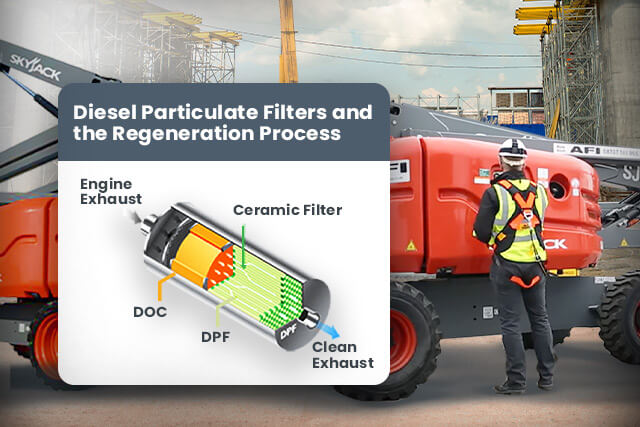AFI Rentals are constantly updating their fleet of rental machines, and it is important to understand how new machine technologies affect operator’s responsibilities and how to avoid the potential of unexpected expensive bills.
What is a diesel particulate filter?
In recent years, engine manufacturers have been phasing in the new standards to reduce nitrogen oxides and reduce particulates from exhaust emissions. On later generation diesel engines, this is done by fitting a filter on the exhaust system called a diesel particulate filter
A diesel particulate filter (DPF) is a filter that captures and stores exhaust soot (some refer to them as soot traps), but because they only have a finite capacity, this trapped soot periodically must be emptied or 'burned off' to regenerate the DPF.
To achieve this the engine in the machine will need to run for a period at a temperature way above it’s normal operating temperature.
You will see these DPF warnings will in the AFI’s latest large machine categories.
Skyjack-SJ60AJS, SJ63AJS, SJ85AJS, SJ86T. Haulotte-HA32RTJS. Genie- GSX125XCS. Manitou-MT,933,1033,1335,1840
These machines will give several warnings that the DPF regeneration is required, this requires additional actions from the machine operator who MUST start this process.
Never ignore this warning light on your plant equipment - it could cost you thousands of pounds!
-
DPF regeneration warnings will present in graduated levels, for example;
-
· Initial warning- Amber warning light
-
· Second warning- Amber warning light with audible alarm
-
· Third warning- Red warning light, reduced machine function speed.
It is extremely important that all plant operators learn to recognise the warnings and understand the actions that must be taken when these occur as these will differ from machine to machine. Always refer to the manufacturer’s operator manual which gives full instructions on the regeneration process for each machine and will require that the machine is run, isolated and unoperated for a period of between 20 to 45 minutes.
Ignoring or repeatedly overriding warnings and failure to follow the DPF regeneration process will result in expensive damage to the engine’s emission control components, resulting in large, unexpected and unwelcome bills for the operator.
If your operator is ever unsure of what to do in a DPF regeneration situation, call your AFI contact who will be more than happy to assist.
-







